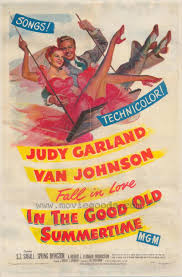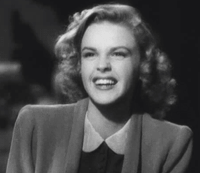 Though nobody foresaw it at the time, 1948 was a major turning point in what would be Judy Garland’s last few years at MGM. After the one-two Freed Unit punch of Easter Parade and Words and Music at the beginning of 1948, Judy was supposed to head straight into her third Arthur Freed film,The Barkleys of Broadway. With Fred Astaire coaxed out of retirement, the duo of Astaire and Garland looked to be a new box office guarantee. Unfortunately, what wasn’t a guarantee was Judy’s health. After two months of rehearsal, Judy backed out of The Barkleys of Broadway, to be replaced by Ginger Rogers. This decision sounded the death knell for her partnership with Arthur Freed, the producer who had created the Judy Garland formula. Judy was too tired, too thin, and too weak to go on filming, until another producer from her past swooped back into the picture: Joe Pasternak.
Though nobody foresaw it at the time, 1948 was a major turning point in what would be Judy Garland’s last few years at MGM. After the one-two Freed Unit punch of Easter Parade and Words and Music at the beginning of 1948, Judy was supposed to head straight into her third Arthur Freed film,The Barkleys of Broadway. With Fred Astaire coaxed out of retirement, the duo of Astaire and Garland looked to be a new box office guarantee. Unfortunately, what wasn’t a guarantee was Judy’s health. After two months of rehearsal, Judy backed out of The Barkleys of Broadway, to be replaced by Ginger Rogers. This decision sounded the death knell for her partnership with Arthur Freed, the producer who had created the Judy Garland formula. Judy was too tired, too thin, and too weak to go on filming, until another producer from her past swooped back into the picture: Joe Pasternak.
The Movie: In The Good Old Summertime (1949, MGM)
The Songwriter: George Evans (music), Ren Shields (lyrics)
The Players: Judy Garland, Van Johnson, Buster Keaton, S.Z. Sakall, Spring Byington, directed by Robert Z. Leonard
The Story: Joe Pasternak would end up producing what would be Judy Garland’s last two pictures at MGM. The first was In The Good Old Summertime. Pasternak used many of the Freed Unit tricks, including recycled music and a recycled plot, this time from the 1940 film The Shop Around the Corner (which would also be remade again into a Meg Ryan/Tom Hanks comedy and a Broadway musical that was revived just this year). Despite the title, In The Good Old Summertime was shot in Fall and set during Christmas. Such is Hollywood. It teamed Judy with the affable black hole of charisma Van Johnson, the (at the time) nearly forgotten Buster Keaton, and a cameo by three-year-old Liza Minnelli. This movie also gave us Judy Garland’s single most gif-able song.
There’s a lot to love about this number. Judy is healthy, smiling and sassy. With less focus on footwork, we get some great Judy gestures and a lot of broad comedy from the diminutive diva. (The foot kick is my personal favorite.) As is so often the case during these high-energy numbers, Judy looks like she’s having a lot of fun and by all reports that was really the case, because Joe Pasternak did one thing very different from Arthur Freed: he refused to overtax his star. No more pressure, no more forced slimdowns. And it worked! Judy finished the shoot incident-free. Unfortunately, MGM took this as a sign that her health and ability had returned, and immediately cast her in Annie Get Your Gun. Judy wouldn’t complete that picture, though the film she made after would add another iconic performance and sad chapter to the Judy Garland legacy.

 Select Previous Highlights:
Select Previous Highlights:
"Dear Mr Gable" (1937), “Zing Went the Strings of My Heart” (1938), "Over the Rainbow" (1939), "I'm Always Chasing Rainbows" (1941), "For Me and My Gal" (1942), "The Trolley Song" (1944), "On the Atchison Topeka and the Santa Fe" (1946), "I Love a Piano" (1948), "Johnny One Note" (1948)